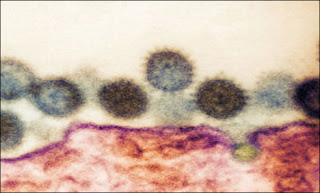Health
Congo Fever Claims Five Victims In 2012
With the death of 42-year-old Jumma Khan, a shepherd from Karachi who recently passed away at a private hospital from Congo Crimean haemorrhagic fever (CCHF), the number of people who succumbed to the disease reached five, health officials said.
Prior to his death, four other patients — mainly livestock farmers from Balochistan — were brought to the city’s private hospitals and died from Congo fever, a deadly viral disease that is transmitted from animals to humans.
The Provincial Dengue Surveillance Cell, which monitors viral disease outbreaks, was reluctant to talk about the disease as they believed it would spread panic among the people.
However, its officials said that so far, five patients had died at Karachi’s hospitals, this year, and their laboratory analysis confirmed that they were suffering from CCHF.
Apart from Jumma Khan, 50-year-old Mumtaz died in the first week of January this year, 17-year old Khair Muhammad passed away in April, 22-year old Noor Agha succumbed to the disease in May and 45-year Saleh Muhammad expired in June.
Two of these patients were admitted to the Aga Khan Hospital and one each to the National Institute of Blood Diseases (NIBD), Liaquat National Hospital (LNH) and Patel Hospital, they added.
It is worth mentioning here that only Aga Khan Hospital had the facilities to diagnose the CCHF virus through laboratory tests and samples of all the patients were sent for analysis and confirmation.
Experts said the viral disease is spread through a tick found on animals and people who deal with dairy farming and livestock were the most likely to catch the deadly virus.
Affected patients would become seriously ill from fever, shortness of breath and hemorrhage and unfortunately, there was no vaccine available to prevent people from falling victim.
Pakistan had been battling with CCHF cases since 2000 and ever since, dozens of patients had died, yet many believed that health authorities were not taking the threat seriously.
Awareness campaign
Experts urged the launch of an awareness campaign about the mode of transmission from animals to humans as thousands of people earned their livelihood through dairy and livestock farming. They added that people needed to be told about precautions that could be taken to protect them from the condition.
Similarly, more facilities to diagnose the disease were needed in the provinces of Khyber-Pakhtunkhwa and Balochistan as well as well as specialised centers to manage the patients, who often used traditional methods to overcome the illness due to ignorance and lack of knowledge.
A specialised training program for general practitioners should also be launched in all the provinces of the country so that they could refer the patients immediately to tertiary-care hospitals in the country.
WHO facts
According to the World Health Organisation (WHO), the disease was first described in the Crimea in 1944 and given the name Crimean haemorrhagic fever. In 1969 it was recognised that the pathogen causing Crimean haemorrhagic fever was the same as that responsible for an illness identified in 1956 in the Congo, and linkage of the two place names resulted in the current name for the disease and the virus. The virus which causes CCHF is a Nairovirus, a group of related viruses forming one of the five genera in the Bunyaviridae family of viruses. All of the 32 members of the Nairovirus genus are transmitted by argasid or ixodid ticks, but only three have been implicated as causes of human disease: the Dugbe and Nairobi sheep viruses, and CCHF, which is the most important human pathogen amongst them.
Although primarily a zoonosis, sporadic cases and outbreaks of CCHF affecting humans do occur. The disease is endemic in many countries in Africa, Europe and Asia, and during 2001, cases or outbreaks have been recorded in Kosovo, Albania, Iran, Pakistan, and South Africa.
Following infection via tick bite, the incubation period is usually one to three days, with a maximum of nine days.
Symptoms
Onset of symptoms is sudden, with fever, aching muscles, dizziness, neck pain and stiffness, backache, headache, sore eyes and sensitivity to light. There may be nausea, vomiting and sore throat early on, which may be accompanied by diarrhoea and generalised abdominal pain. Over the next few days, the patient may experience sharp mood swings, and may become confused and aggressive. After two to four days, the agitation may be replaced by sleepiness, depression and lassitude, and the abdominal pain may localise to the right upper quadrant, with detectable liver enlargement.
The mortality rate from CCHF is approximately 30 percent, with death occurring in the second week of illness. In those patients who recover, improvement generally begins on the ninth or tenth day after the onset of illness.
















0 comments: